Daddy Long Legs are spiders from the Pholcidae family, comprising almost 2,000 different species. Interestingly, the term “daddy long legs” is commonly applied to several different types of arthropods, especially the harvestmen. The confusion spawned by this shared name has generated a lot of misinformation about these arachnids, including what daddy long legs eat and how they hunt.
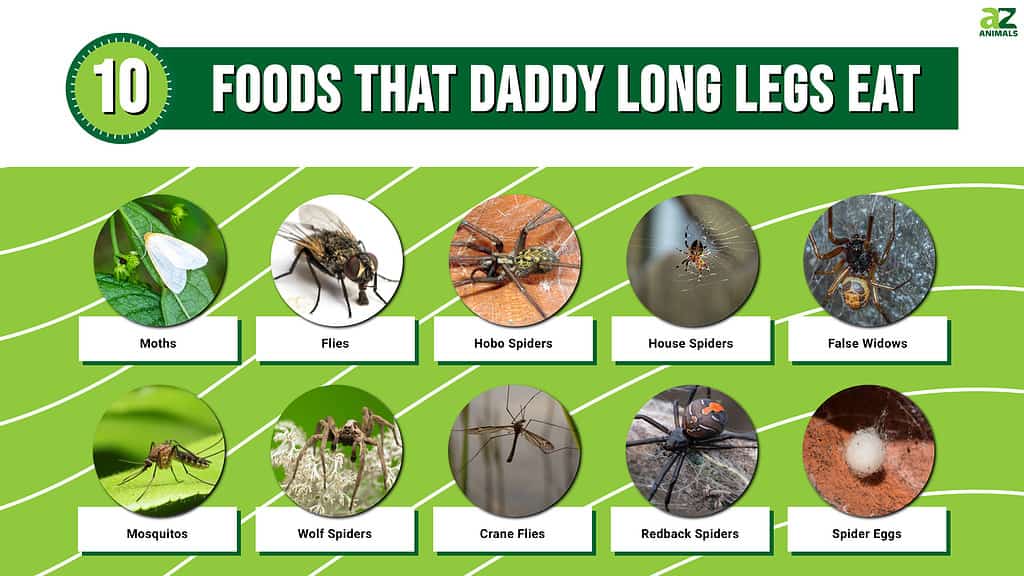
To clear up some of this uncertainty, we are going to look at what daddy long legs, also known as cellar spiders, prefer to eat, how they hunt, and what they need to watch out for along the way.
What Foods Do Daddy Long Legs Like To Eat?

Daddy long legs eat insects and other spiders. As a result, cellar spiders have gotten a fair amount of acclaim as helpful pest control. Some of the spiders they hunt pose a serious threat to people. By eliminating them, daddy long legs can help humans that live in places where redback spiders, a relative of the black widow, thrive in close proximity.
Daddy long legs do not have very specific preferences when finding food. They will typically wait for something to come across their untidy webs and then feed on them, or they actively hunt.
Here is a list of some of the most common insects and arachnids that daddy long legs eat:
- Moths
- Flies
- Hobo spiders
- House spiders
- False widows
- Mosquitos
- Wolf spiders
- Crane flies
- Redback spiders
- Spider eggs
Daddy long legs consume a variety of insects and arachnids. By eating some of these pests, these spiders actually help human beings avoid harmful interactions. Reducing the population of venomous spiders and disease-carrying mosquitos is a very good reason to avoid killing these spiders should one find them in their home.
How Do Daddy Long Legs Hunt?
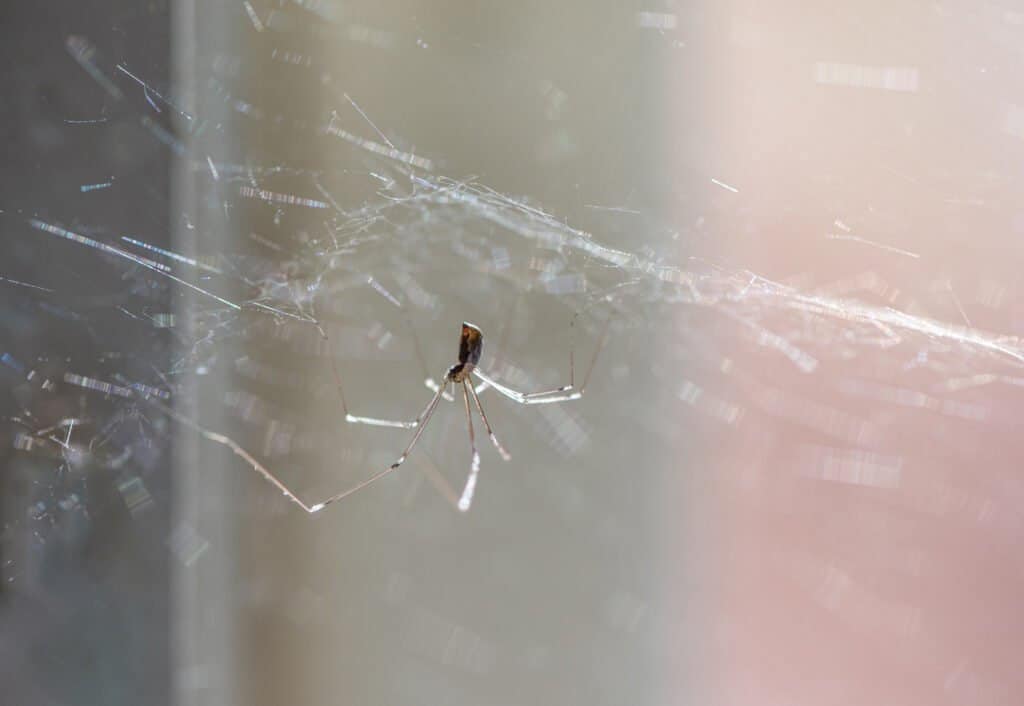
Daddy long legs’ webs are messy but effective.
©iStock.com/Lena Gadanski
Knowing what the daddy long legs eat is almost as interesting as learning about the methods they use to obtain their food. Like many other spiders, daddy long legs produce a web that they use to capture their prey.
These webs are often created in places with little light and a low chance of being disturbed. Buildings with attics, basements, and tall ceilings are common places for daddy long legs to set up. They also establish webs outside near trees and near piles of litter, like leaves.
Although many spider webs are sticky, the web of the daddy long legs is not. Instead, their web has an unusual structure that slows down the prey enough that the spider can attack it from a distance with an excreted material and move in for the kill.
Many members of the Pholcidae spider family have venom which is used in combination with their fangs to kill their prey.
Daddy long legs also hunt in other ways. Another common name for these spiders is the “vibrating spider.” The reason is that when something disturbs the daddy long legs’ web, they will often shake their bodies and the web as a result.
One possible reason for this behavior is that vibrating the web is an attempt to trap a bug that came close to the web but ultimately escaped. Shaking the web increases the chances of capturing that bug if it remains close by.
Daddy long legs also use their vibrations when they are hunting other spiders. Sometimes, they will happen across a spider web and use their vibrations to draw out the other spider to ambush them or feed on their eggs.
These spiders are successful hunters both as ambush predators and trappers.
Who Competes with Daddy Long Legs for Food?
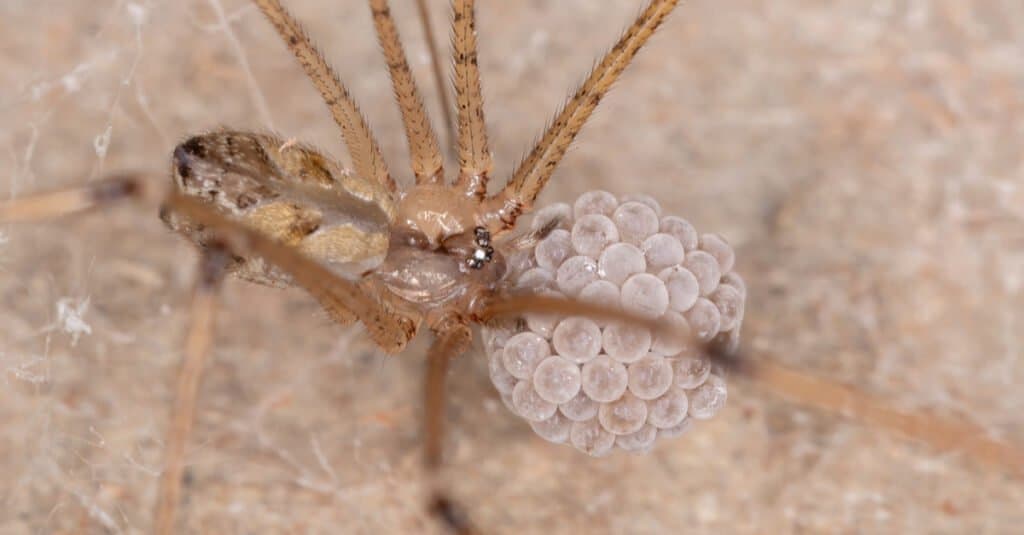
Daddy long legs face many foes.
©iStock.com/ViniSouza128
Daddy long legs are not the only spiders that like to creep around in damp, and dark places and eat other insects and arachnids. They face a fair amount of competition for food, especially from their own species. Some of their primary food struggles come from:
- Other spiders, sometimes other daddy long legs
- Birds
- Wasps
- Dragonflies
- Lizards
- Scorpions
- Snakes
As one might imagine, when daddy long legs cannot find the right insects to feast on, they turn on other arachnids and eat them instead. In terms of food competition, male daddy long legs often have the advantage over females because they grow quicker. When a larger spider living in proximity to others detects prey, it has a higher chance of successfully eating that prey compared to smaller spiders that do not want to become the next meal.
Interestingly, female cellar spiders in conditions with little food were more likely to have an extra molt, giving them an edge against males raised in food-rich conditions.
What Predators Eat Daddy Long Legs?
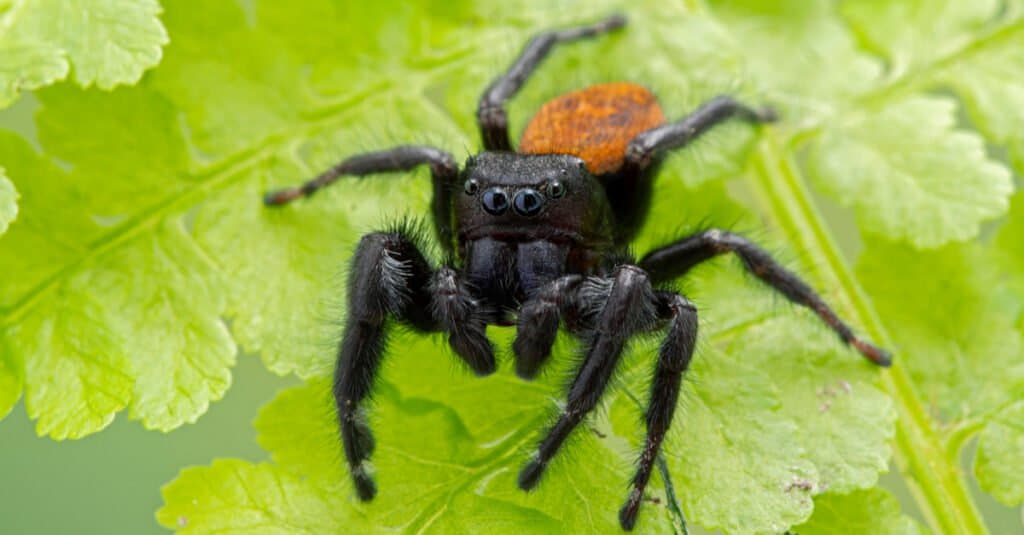
Jumping spiders
often leap directly into webs to eat daddy long legs.
©Ernie Cooper/Shutterstock.com
Like any other arachnid, daddy long legs have to deal with a series of predators.
Here is a list of their most common predators:
- Jumping spiders
- Other daddy long legs (in low-food situations)
- Birds
- Frogs
- Lizards
- Small mammals
- Centipede
These creatures can kill daddy long legs. Although humans do not eat them, they will still frequently kill cellar spiders out of fear or upon finding their web in an inconvenient space.
Can a Daddy Long Legs Hurt Humans?
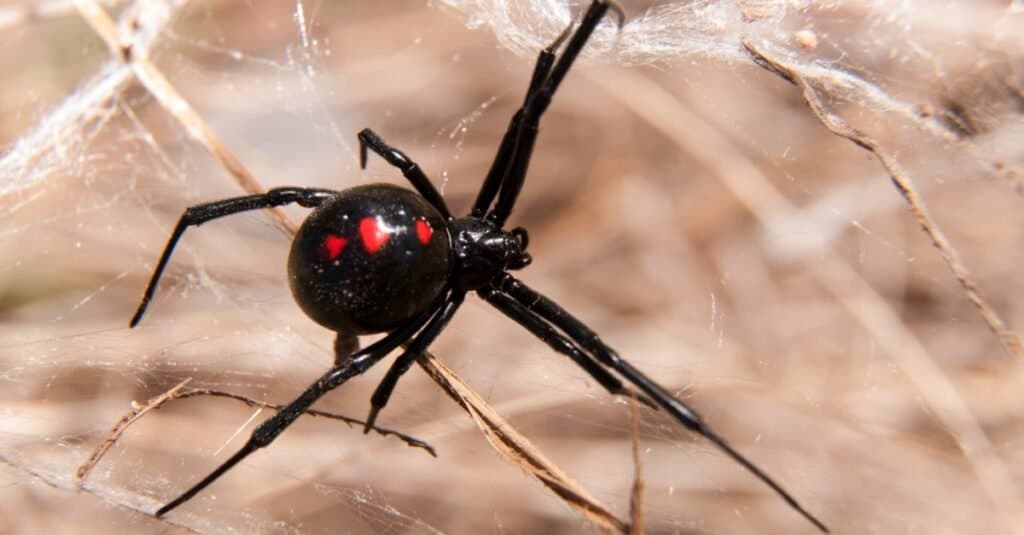
The daddy long legs bite is not very harmful compared with others.
©Sari ONeal/Shutterstock.com
Given the name “cellar spider” and the confusion surrounding daddy long legs in general, people worry that these spiders could cause them harm.
In fact, one ongoing myth holds that daddy long legs are the most venomous spider and the only thing saving humans from their deadly bite is that their teeth are too small to break skin. Neither part of that myth is true, though.
Experiments revealed that the venom is only mildly painful for humans and that the teeth can, in fact, break the skin of humans. Part of the confusion stems from people mixing up their definition of daddy long legs; harvestmen don’t bite humans (they basically pinch) and they lack venom.
Learning about the true daddy long legs spiders, the Pholcidae family, should put many people’s worries to bed. Not only are these spiders highly unlikely to harm a person, but they are also doing a lot more good than harm. Their hunting can cut down on the number of pest insects and arachnids in a person’s house and decrease their chances of running into a more harmful spider species.
Summary Of 10 Foods That Daddy Long Legs Eat
| Rank | Food In Daddy Long Legs Diet |
|---|---|
| 1 | Moths |
| 2 | Flies |
| 3 | Hobo spiders |
| 4 | House spiders |
| 5 | False widows |
| 6 | Mosquitos |
| 7 | Wolf spiders |
| 8 | Crane flies |
| 9 | Redback spiders |
| 10 | Spider eggs |
Do Daddy Long Legs Drink Water?
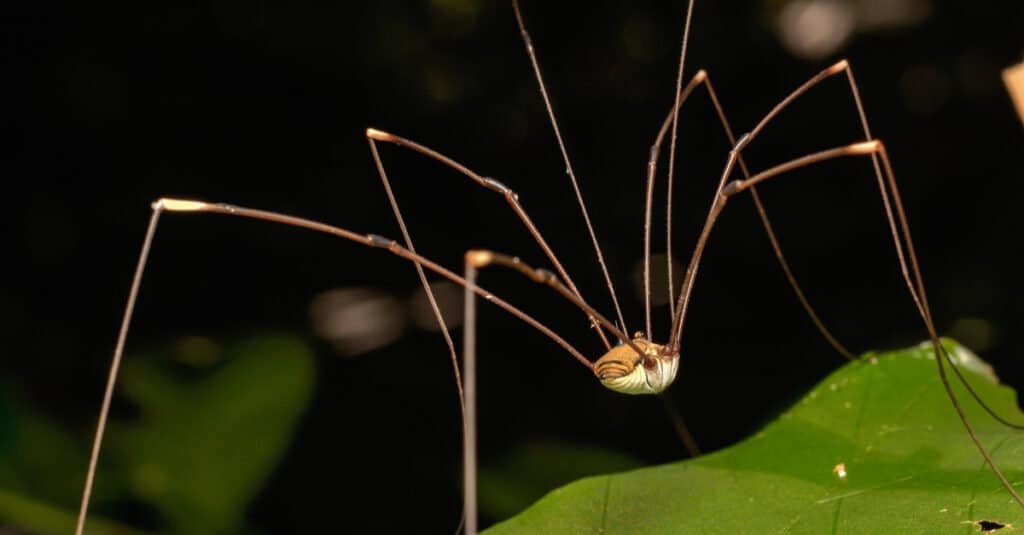
The daddy long legs have a mouth opening that is wider than most other arachnid species.
©by pap/Shutterstock.com
This species of spider, belonging to the family Opiliones, is also called harvest spiders, harvestmen, and harvesters, and there are over 6,650 species found throughout the world. Their mouths are made up of two parts – the pedipalps, which hold onto their food, and the jaws, also known as chelicerae, which tear their food into bite-sized pieces. They are unlike other spider species in that their mouths are large enough to tear and consume small pieces of solid food.
Although their food is mixed with digestive fluids, they still need access to water to thrive and can not live without it. They can often be found around sources of water and should you have one at home as a pet and wish to give water, you can douse a cotton ball with water and this should let it have sufficient moisture.
The photo featured at the top of this post is © iStock.com/ViniSouza128
FAQs (Frequently Asked Questions)
Do Daddy Long Legs the Most Venomous Spider?
No, this is a myth. Daddy long legs do have venom, and can break the skin of humans. However, they are far from being the most venomous spider. Their bites are only mildly painful to humans.
Can Daddy Long Leg Bites Break Human Skin?
Yes, the bite of a daddy long leg can break human skin. It’s a myth their bites can’t that likely stems from confusion around which spider goes by the nickname “daddy long legs.” However, their bites cause only mild pain, so you need not worry about their impacts.
Thank you for reading! Have some feedback for us? Contact the AZ Animals editorial team.






